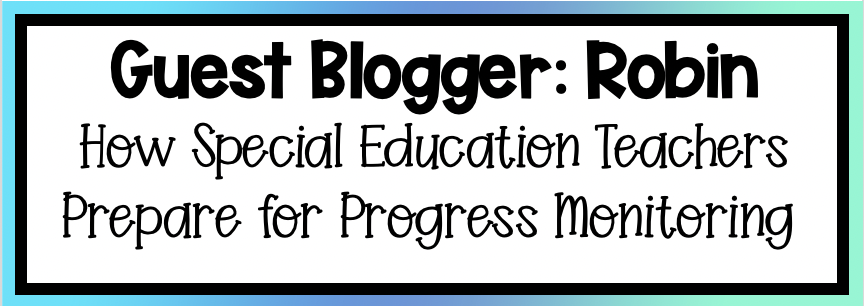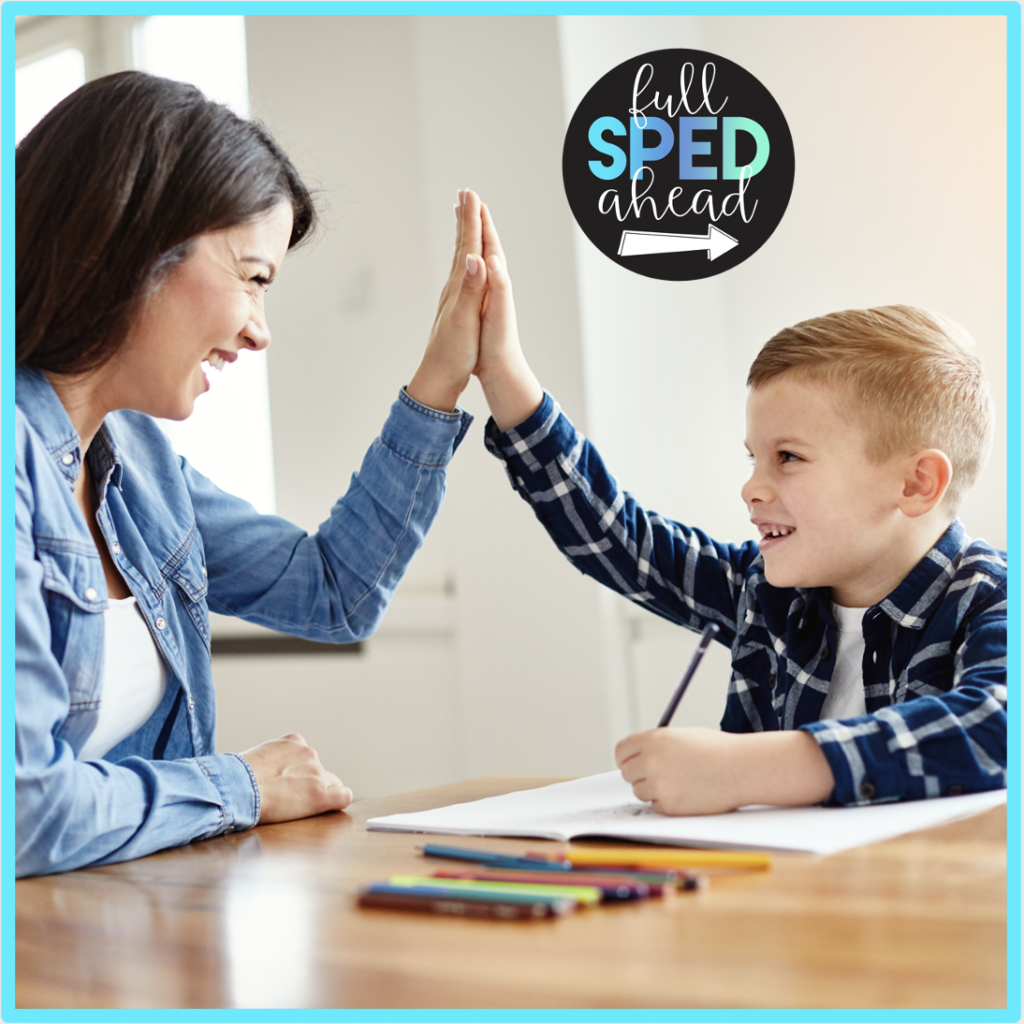I am excited to introduce this week’s guest blogger Robin from Expressively Sped to talk about Progress Monitoring.

The Individuals with Disabilities Act (IDEA) tells us when and how educators report on progress. This is towards student achievement and progress with IEP (Individualized Education Program) goals and objectives.
IDEA further describes that progress reporting should be “concurrent with the issuance of report cards”. These guidelines are clear for educators. It tells us when and how to provide progress reports to parents.
Reference: (https://sites.ed.gov/idea/regs/b/d/300.320/a/3/i).
All IEP goals are created to describe how a goal will be measured. This includes data collection methods and frequency in which data is collected. Three to five trials are used to outline the frequency of when data collection will be taking place. Meaning, a student’s progress on a certain goal will be specifically measured. This is measured three to five times per quarter. Usually averaged out to determine progress towards the mastery criteria set in the main goal.
An example of a measurable goal might look like the following:
Given a grade level reading passage, Jon will answer comprehension questions about the text with 80% accuracy in 5/5 quarterly probes.
Each quarter, five probes will be given to determine how close the student is to the goal of 80% accuracy.
The progress report will reflect the student scores. It will also offer a narration to describe how the student is working towards this goal. The progress report may also suggest strategies for further improvement as the scholar continues to work on the goal.

In order to set yourself and your students up for success, here are a few things to think about:
In my district, we have a graphing system within our IEP system. We have to plot data points throughout the quarter. These data points automatically graph and transfer into our progress reports along with our narrations. If the ceilings are not set correctly in the IEP, the graph will not accurately reflect the students progress.
Furthermore, if the ceiling is set too high or too low in comparison to the mastery criterion of the goal, the graph might not make sense. Even without a graphing system, having the IEP goal set up correctly will give you the most accurate information. This student progress will be reflected when you complete your progress monitoring process.

Progress reports should be data driven and informative. They should also be easy to read and understand. Remember that parents and guardians do not have special education degrees and cannot interpret documents that are overloaded with special education jargon. It is also best not to dump a bunch of numbers into the report. Provide one number that represents the current progress of the student as compared to what the goal is.
For example: Jon is currently performing with 65% accuracy with a goal of 80% accuracy. The narration should explicitly describe the students progress on the goal.
Some things to think about:
Most educators ensure effective communication with parents throughout the school year. However, everybody is constantly on the move and overloaded with professional and personal responsibilities. It is sometimes challenging to touch base consistently.
As educators, we hope that all of our parents make it to back to school night or report card conferences. The truth of the matter is so many parents don’t make it.
Progress reporting is more than just A’s and B’s on a report card. For students who receive special education services and their parents, the progress report gives an in-depth and specific narrative on how the student is meeting all of their IEP goals supported by very specific data. As we learned above, progress reports are given out to students and their parents each quarter. This is throughout the school year.
These clear guidelines help educators ensure that these documents are prepared and ready for parents. These guidelines also provide some of that consistency back to the parents. They know that they will be getting an update on their child each quarter in writing. Something that letters on a report card do not offer.
Take this one step further and use IEP Goal Bins to do progress monitoring!
Looking for more tips on how to organize your IEP Data – check out this post!
Want to be more confident in your digital data collection? Click this post!
What are you looking for?

COPYRIGHT © 2024 Full SPED Ahead